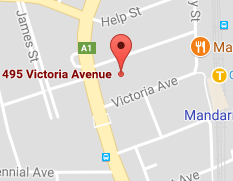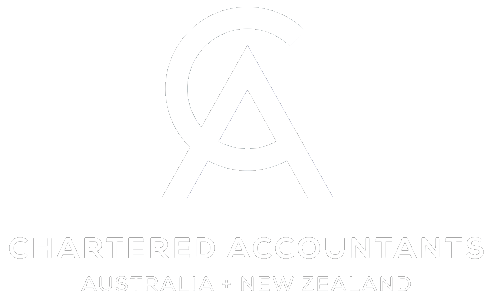WELCOME
Welcome to our July 2019 edition of the StewartBrown newsletter. We hope to keep you informed of the important tax developments and issues affecting businesses in Australia today.
TAX CUTS: HOW MUCH WILL YOU GET THIS YEAR AND BEYOND?
The Government's Personal Income Tax Plan, as announced in the 2018–19 federal Budget, was passed by parliament in June 2019. The legislation introduces changes to income tax thresholds and tax offsets and includes:
- changes to income tax rate thresholds in the 2018–19, 2022–23 and 2024–25 income years
- a new low and middle income tax offset to reduce the tax payable by low and middle income earners in the 2018–19, 2019–20, 2020–21 and 2021–22 income years
- a new low income tax offset from the 2022–23 income year (to replace both the new low and middle income tax offset and the current low income tax offset).
The table opposite outlines the rates and thresholds that apply, along with the offset entitlements related to these changes.
Entitlement to the new offset is in addition to the existing low income tax offset, and is available on assessment after you lodge your income tax return.
People earning up to $125,333 will be entitled to a tax offset of up to $1,080 when they submit their 2019 (and 2020, 2021 and 2022) income tax returns. The Government has estimated that by 2024, 95% of taxpayers will pay no more than 30 cents in the dollar in tax.
If your taxable income (in each of the 2019-2022 financial years):
- does not exceed $37,000 you are entitled to a tax offset of $255
- exceeds $37,000 but does not exceed $48,000, you are entitled to $255 plus 7.5% of the amount of the income that exceeds $37,000 (up to a maximum offset of $1,080)
- exceeds $48,000 but not $90,000, you are entitled to a maximum offset of $1,080
- exceeds $90,000, you are entitled to $1,080 less 3% of the amount of the income that exceeds $90,000.
A new low income tax offset will apply for the 2022–23 and later income years.
Updated rates, tax thresholds and offset entitlements
| Rate | From 1 July 2018 Income range ($) |
From 1 July 2022 Income range ($) |
From 1 July 2024 Income range ($) |
|---|---|---|---|
| Tax free | 0–18,200 | 0–18,200 | 0–18,200 |
| 19% | 18,201–37,000 | 18,201–41,000 | 18,201–41,000 |
| 32.5% | 37,001–90,000 | 41,001–120,000 | 41,001–200,000 |
| 37% | 90,001–180,000 | 120,001–180,000 | - |
| 45% | >180,000 | >180,000 | >200,000 |
| New low and middle income tax offset | Up to 1,080 | - | - |
| Current low income tax offset | Up to 445 | - | - |
| New low income tax offset | Up to 645 | Up to 645 |
For employers, the Pay as you go (PAYG) withholding tax tables have also been updated by the ATO.
Important information – Tax tables
The Federal Budget did not result in any changes to tax rates or income thresholds for the 2019-20 income year.

Changes announced to the low and middle income tax offsets were only in respect of the amount of that offset, and that is claimable when individuals lodge their income tax return.
The HELP/SSL/TSL tax tables will be renamed ‘Study and training support loans tax tables’. There will no longer be separate SFSS tax tables. These changes arise from the passing of the Sustainability and VSL Separation Bills in 2018.
You will need to refer to the applicable 'Study and training support loans tax table' wherever any existing tax tables refer to HELP/SSL/TSL or SFSS tax tables.
Therefore, only Schedule 8 – Statement of formulas for calculating study and training support loans components (NAT 3539) and study and training support loans weekly, fortnightly and monthly tax tables have been updated for the 2019–20 year.
SINGLE TOUCH PAYROLL-IMPORTANT REMINDERS
We recently published a newsletter devoted to Single Touch Payroll (“STP”) and readers are referred to that newsletter for more detailed information on this topic.

If, as an employer, you are already operating in the STP system these are some of the things that will be impacting you right now and that you need to be across:
- You no longer need to issue employees with a payment summary;
- You have until 31 July to finalise payroll information for the 2018-2019 year.
- You should inform staff that they will no longer receive a payment summary and should refer them to their MyGov account or speak to their Tax Agent to retrieve that information;
- Payment summary information will now be called an Income Statement;
- Penalties can be huge for getting STP wrong!
Employers with 20 or more employees have been required to be STP-compliant from 1 July 2018, and so the 12-month transition period has now finished. This means that penalties are now in effect.
Small businesses, or those with 19 or less employees, will still be afforded protections of the transition year as, under the law, they are only required to report through STP from 1 July 2019.
The ATO has published the various penalties that can apply for missing or STP reports that are lodged late, although they have confirmed it would generally only apply these penalties where an employer is routinely and repeatedly late.
The penalty is calculated at the rate of $210 for each 28 days or part thereof that the Single Touch Payroll report(s) is/are overdue (to a maximum of $1,050). This penalty increases to a maximum of $2,100 for medium entities, $5,250 for large entities and $525,000 for significant global entities.
In addition, there is a penalty in the law for making a false and misleading statement within a STP report.
With the ATO providing a three month buffer from 1 July 2019, small employers will not need to apply for a deferral as long as they start reporting by 30 September 2019.
Micro employers, specifically those with one to four employees, can choose to report through their registered tax or BAS agent on a quarterly basis until 30 June 2021, but their registered agent must apply for the concession by 30 September 2019.
Closely held payees do not need to report through STP for the 2019–20 financial year. They will need to report from 1 July 2020 and will have the option to report quarterly. The ATO will need to be notified of closely held payees for the 2020–21 financial year.
Seasonal and intermittent employers are eligible for the quarterly reporting concession and will need to apply for it by 30 September 2019.
LARGE V’S SMALL COMPANY REPORTING CHANGES
The Corporations Act 2001 requires ‘large’ proprietary companies to lodge audited financial statements with the Australian Securities and Investments Commission (“ASIC”) whereas ‘small’ proprietary companies are only required to lodge audited financial statements if directed by ASIC or where requested by more than five percent of their shareholders.
Based on the regulatory thresholds introduced in 2007, a proprietary company is considered ‘large’ if it satisfies at least two of the following:
- The consolidated revenue for the company and any entities it controls is $25 million or more per annum;
- The value of the consolidated gross assets at the end of the financial year of the company and the entities it controls is $12.5 million or more; and
- The company and any entities it controls have 50 or more employees at the end of the financial year.
This has all changed as new thresholds come into force with effect from 1 July 2019. The Regulations adjust the thresholds by doubling them as follows:
- The consolidated revenue for the company and any entities it controls is $50 million or more per annum;
- The value of the consolidated gross assets at the end of the financial year of the company and the entities it controls is $25 million or more; and
- The company and any entities it controls have 100 or more employees at the end of the financial year.

This is a significant financial reporting development as it relieves many growing small and mid-sized Australian businesses from the requirement to prepare and lodge audited financial statements with ASIC.
Based on Government forecasts, approximately one third of proprietary companies who currently lodge audited financial statements with ASIC will no longer have that obligation under the increased financial reporting thresholds.
It’s important to note that a significant number of entities will still be subject to reporting obligations as a result of their banking or stakeholder agreements outside of Corporations Law. These reporting obligations may require that an audit still takes place.
The increase in thresholds is intended to ensure financial reporting obligations are targeted at economically significant entities while reducing compliance costs for relatively smaller proprietary companies.



